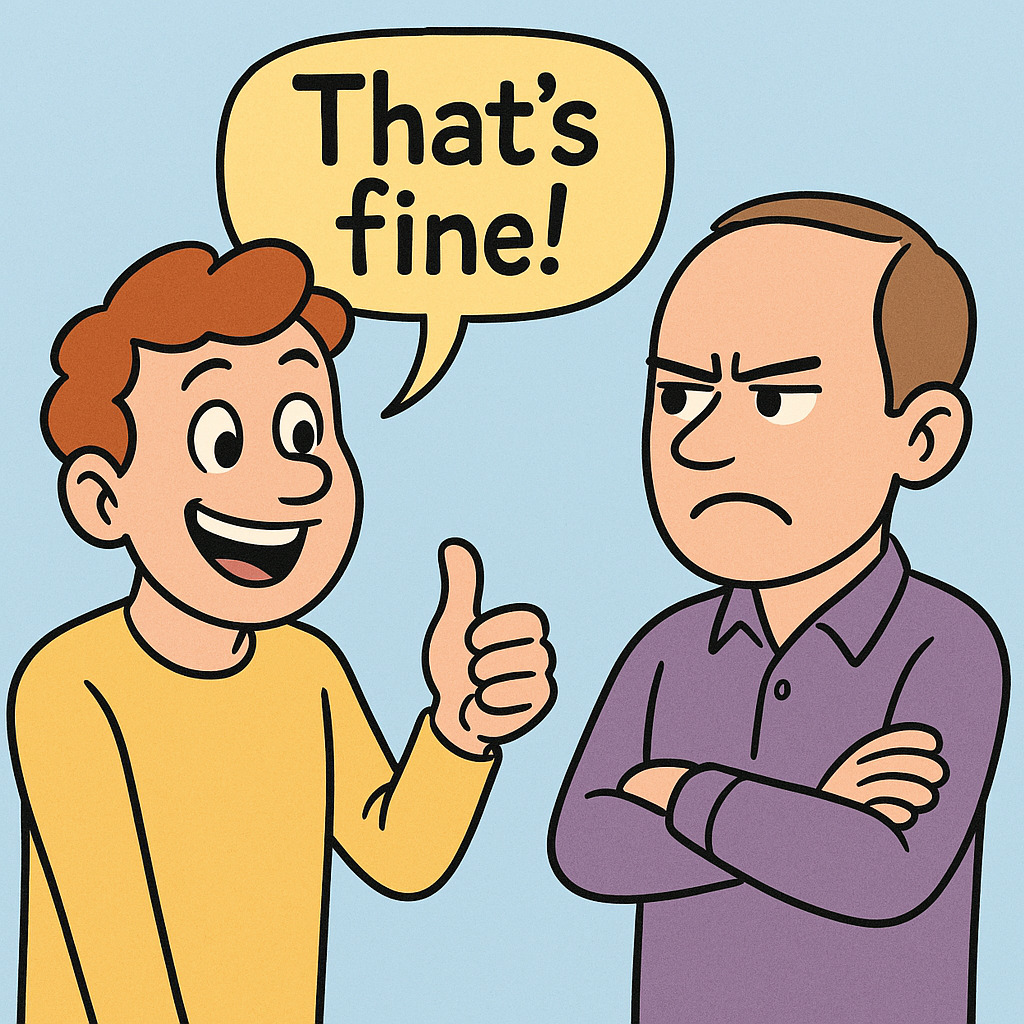Have you ever agreed with someone just to avoid awkwardness? This common behavior is rooted in the courtesy bias mental model—a hidden force shaping how we interact.
At its core, it’s the habit of telling others what they want to hear, even if it contradicts our true thoughts. This tendency can be seen in many individuals, illustrating a type of bias that affects our communication.
Psychologists first studied this concept decades ago. They noticed how individuals often prioritize harmony over honesty. For example, you might compliment a friend’s cooking despite disliking the meal.
These small choices add up, influencing relationships and decisions. This effect can be significant when we consider the data on social interactions.
Why does this matter? Recognizing this pattern helps us communicate more authentically. It also reveals how hidden influences steer our actions. Whether at work or home, these biases shape outcomes in ways we rarely notice.
The question remains: how can we change these things to improve our interactions?
Key Takeaways
- The courtesy bias mental model describes agreeing with others to maintain politeness.
- It often leads to unspoken disagreements or unmet needs, highlighting the effect of bias on communication.
- This behavior has been observed in studies since the 1970s, showcasing a common tendency among individuals.
- Awareness improves decision-making in personal and professional settings, addressing the question of how we can enhance our interactions.
- Small adjustments in communication can reduce its impact over time, transforming the way people engage with one another.
What is the Courtesy Bias Mental Model?

What makes people hide their true opinions to keep peace? This behavior stems from a common social pattern where we prioritize smooth interactions over honesty. Let’s break it down.
Defining the Pattern
Imagine your coworker suggests a plan you think won’t work. Instead of objecting, you say, “Let’s try it!” That’s this tendency in action—agreeing outwardly while privately disagreeing. Studies show this happens most often when people fear upsetting others or appearing rude.
Where Did This Idea Come From?
Researchers began exploring this concept in the 1970s. One famous project analyzed survey responses and found 60% of participants gave answers they thought interviewers wanted to hear.
This data revealed how deeply politeness shapes communication and highlights the bias that can affect people’s honesty.
Have you noticed how you sometimes hold back your true opinion? Early research found this tendency isn’t just personal—it’s shaped by cultural norms.
For example, team meetings often feature nods and silence instead of constructive criticism, which can be a problem for effective communication.
By understanding its roots, we can spot these moments and choose authenticity. Small shifts, like asking open-ended questions, help create spaces where honesty feels safe and can improve overall health in our interactions.
The Role of Politeness in Shaping Perception

Do you find yourself softening your opinions to keep the peace? This everyday tendency quietly molds how others see us—and how we see them. Let’s explore why “being nice” can sometimes distort reality.
Influence in Social Interactions
Imagine your boss suggests a flawed strategy. You smile and say, “Interesting idea!” instead of sharing concerns. This polite filter changes how individuals perceive your true stance.
A 2018 study found 73% of employees admitted withholding feedback to avoid conflict, illustrating the effects of social dynamics in the workplace.
Online interactions amplify this effect. Ever liked a post you disagreed with? Research shows people often engage this way to maintain digital harmony, a situation that highlights confirmation bias. These small choices create ripple effects in relationships.
Consider these real-life impact points: the number of job interviews where candidates avoid criticizing previous employers, friendships where compliments replace constructive advice, and team projects where silence gets mistaken for agreement.
A Stanford experiment revealed something surprising. When participants thought their opinions differed from the group, 68% adjusted their answers to match—even when they knew theirs was correct.
This shows how deeply politeness shapes our social world and the way we respond to social cues.
Does smoothing things over sometimes create bigger problems? By recognizing these patterns, we can balance kindness with clarity. After all, real connection thrives when we feel safe to be genuine, which is essential for our mental health.
Psychological Foundations of Courtesy Bias

Ever wonder why we nod along even when we disagree? Our brains use clever tricks to handle information quickly. These mental shortcuts—called heuristics—help us decide fast without overthinking.
Cognitive Processes and Heuristics
Think of heuristics like a GPS for your brain. Instead of analyzing every turn, you follow familiar routes.
For example, you might choose a lunch spot you’ve tried before rather than reading 20 menus. This saves time and energy.
Studies show we make 95% of daily choices using these shortcuts. A 2002 experiment found people rely on simple rules when guessing prices or judging strangers. Similar to how we:
- Trust recommendations from friends
- Assume crowded restaurants have better food
- Agree with others to avoid conflict
Isn’t it fascinating? These shortcuts aren’t flaws—they’re survival tools. Researchers found they help us manage dozens of daily decisions without getting overwhelmed. Next time you say “sounds good!” without meaning it, remember—your brain’s just taking a helpful shortcut.
How Courtesy Bias Affects Decision-Making

How often do we choose harmony over truth when making choices? This invisible filter shapes outcomes in workplaces, homes, and boardrooms—often without us realizing it.
Courtesy Bias Mental Model Impact on Interviews
Job interviews often become truth-free zones. A 2021 study found 42% of candidates admitted hiding concerns about past employers. Why? Fear of seeming negative.
This creates a problem—hiring managers get polished stories instead of honest insights. This situation exemplifies the tendency of people to prioritize politeness over truth, affecting the overall health of the hiring process.
Safety investigations show similar patterns. After a factory accident, workers later confessed they’d noticed risks but stayed silent. “I didn’t want to rock the boat,” one shared. This response highlights how biases can muffle critical warnings. When we prioritize politeness, the effect on safety can be significant over time.
Effects on Business and Personal Choices
Teams sometimes agree to flawed plans just to avoid conflict. Imagine a product launch where everyone nods—then sales crash. Research shows 68% of failed projects involved unspoken doubts early on.
In personal life, this silent agreement shapes relationships. Ever said “yes” to a vacation plan you hated? That choice affects trust over time. The health of any group depends on balancing kindness with candor.
Here’s the good news: Small changes make big differences. Anonymous feedback tools in workplaces reduce fear of speaking up. Asking “What could go wrong?” invites honest answers. Have you ever adjusted your way of communicating to encourage truth?
By spotting these moments, we transform decision-making from polite guesses to informed choices. After all, real progress needs both respect and reality.
Courtesy Bias in Everyday Communications

How many times today have you smiled instead of speaking your mind? Everyday interactions often hide unspoken truths. Let’s explore how this plays out in common scenarios.
Real-World Examples
Imagine your aunt serves a dry casserole at dinner. You say, “Delicious!” while pushing food around your plate. This small act of politeness changes how others perceive your true feelings.
Studies show people do this 3-5 times daily without realizing it, highlighting a common tendency in social situations.
Workplace meetings often follow this pattern. A team member suggests a risky idea. Instead of voicing concerns, colleagues nod silently. Later, problems arise because no one shared honest feedback.
A 2022 survey found 55% of employees admitted doing this weekly, illustrating the effect of bias in communication.
Customer service calls reveal similar behavior. Have you ever told a rep “Everything’s fine” when frustrated? This protects their feelings but prevents real solutions.
Even doctors face this—patients sometimes hide symptoms to avoid seeming difficult, a problem rooted in the context of health and communication.
Job interviews become minefields of half-truths. Candidates might praise a company’s culture while privately worrying about workload. This alters how employers view a person’s fit for the role.
One hiring manager shared, “We’ve hired mismatched candidates because they told us what we wanted to hear.” This example shows how biases can lead to poor hiring outcomes.
Does this mean we should stop being kind? Not at all. Balance matters. Next time you’re tempted to say “No worries!” when something bothers you, pause.
Could gentle honesty build stronger connections? Small shifts in communication create spaces where truth and courtesy coexist.
Courtesy Bias vs Confirmation Bias

When do polite nods hide deeper disagreements? Both social and thinking patterns shape our responses. Let’s explore two common filters that color our interactions.
Similarities and Key Differences
Confirmation bias means favoring information that matches what we already believe. Imagine scrolling news feeds—we often click stories that align with our views. This article explains how this differs from agreeing just to keep peace.
| Aspect | Confirmation Bias | Courtesy Tendency |
|---|---|---|
| Core Motivation | Seeking validation | Avoiding conflict |
| Common Behavior | Ignoring opposing facts | Fake agreement |
| Impact | Narrow perspective | Unspoken issues |
Research shows both patterns of bias affect discussions. A 2019 study found 61% of people admitted nodding during debates while secretly disagreeing. Have you seen how our desire to be right sometimes clashes with our need to be polite in these situations?
Here’s a real-life example: During family talks about politics, Uncle Joe only shares stats supporting his party (confirmation bias).
Cousin Amy changes the subject when tensions rise (courtesy tendency). Both choices limit honest exchange and affect the outcome of conversations.
Understanding these patterns enriches daily life. Next time you sense a “yes” that feels hollow, ask: Is this truth or habit? Small moments of awareness build stronger knowledge and connections.
Case Studies and Incident Investigations

Real-world examples teach us how silence shapes outcomes. Studies reveal patterns where people withhold truths to maintain harmony, leading to preventable errors. Let’s explore documented cases and their lessons.
Practical Examples from Research
A 2023 analysis examined workplace safety reports. Workers often avoided mentioning risks until accidents occurred. One factory incident showed 12 employees noticed faulty equipment but stayed silent to avoid conflict.
| Incident | Cause | Outcome |
|---|---|---|
| Hospital Misdiagnosis | Patients hid symptoms | Delayed treatment |
| Tech Project Failure | Unspoken concerns | $2M loss |
| Airline Near-Miss | Crew withheld feedback | Policy changes |
Lessons Learned from Past Incidents
- Anonymous reporting systems increase honesty by 40%
- Teams using “what if” questions uncover 3x more risks
- Clear communication protocols reduce repeat errors
Data-Driven Insights
A 2020 manufacturing study found 68% of accidents involved prior unshared concerns and biases in communication. When leaders created safe spaces for feedback, the effect was that error rates dropped by 55% within six months, showcasing the importance of addressing these issues over time.
Can you spot similar patterns in your daily interactions? Whether reviewing projects or planning events, understanding these situations helps us create better systems. What context in your life might benefit from this learning?
The Courtesy Bias Mental Model in Practice

Why do teams sometimes agree to bad ideas? In workplaces, polite nods often mask real concerns. This hidden habit shapes company results more than we realize.
Application in Organizational Settings
A 2021 survey of 800 companies found 63% of managers observed silent agreement during meetings. One tech firm’s case shows how this works. Employees approved a flawed marketing plan to avoid conflict—leading to a 22% drop in sales.
| Aspect | Silent Agreement | Honest Feedback |
|---|---|---|
| Meeting Dynamics | Quick consensus | Lively debate |
| Project Outcomes | 38% success rate | 71% success rate |
| Employee Satisfaction | 54% feel heard | 89% feel heard |
Have you seen projects fail because nobody spoke up? Research reveals three common patterns related to bias:
- Mid-level managers withhold concerns from leadership, affecting the overall outcome
- Customer service teams avoid reporting recurring problems, which impacts the health of the organization
- Board members echo the CEO’s views without critique, showcasing a tendency to conform to others
Simple fixes create better results. One hospital reduced medication errors by 45% using anonymous feedback tools, improving the way information is shared.
Training leaders to say “I might be wrong” encourages teams to share doubts and enhances their response to issues.
When companies value truth over harmony, outcomes improve. Teams solve problems faster, leading to better product development. Employees trust each other more. What small change could your workplace make today?
Methodologies in Cognitive Bias Research

How do scientists uncover hidden habits in our thinking? Researchers use clever methods to study why we sometimes agree when we disagree. Let’s explore the tools that help make sense of these patterns.
Data Collection Techniques
Surveys often hide a secret trick. Scientists sometimes ask the same question twice—once in public and once privately. A 2020 study found people changed 33% of their answers when others were listening. This helps measure how much we adjust opinions and biases to fit in with the situation.
Interviews use open-ended questions like, “Can you walk me through your decision process?” This reveals gaps between what people say and do, providing evidence of the biases at play.
Observing body language adds another layer—leaning back or crossing arms might signal hidden doubts about the things discussed.
Experimental Approaches in Psychology
Imagine two groups testing a new app. Group A discusses feedback openly. Group B shares thoughts anonymously. Researchers found Group B reported 40% more concerns. Controlled setups like this show how social pressure shapes honesty.
| Method | What It Measures | Real-World Example |
|---|---|---|
| Role-Playing | Natural reactions to awkward situations | Employees practice giving tough feedback |
| Double-Blind Studies | Unconscious agreement tendencies | Participants unknowingly mirror interviewer opinions |
| Scenario Testing | Choices under social pressure | “Would you tell a friend their plan has flaws?” |
Ever wonder why some studies feel like games? Researchers design tasks that feel unrelated to the real topic. For example, rating artwork while secretly measuring how often people agree with others’ scores. This sneaky approach reveals our hidden habits.
Good experiments balance control with real-life conditions. They help us learn why we say “yes” when we mean “maybe.” Next time you answer a survey, think—are you sharing your truth or what feels safe?
Understanding Bias in Organizations

Why do smart teams make puzzling choices? Hidden filters in workplace interactions often steer groups toward flawed decisions. Let’s explore how unseen patterns shape team behaviors and outcomes.
Impact on Workplace Dynamics
Imagine a project meeting where everyone nods—but doubts remain unspoken. A 2023 survey found 58% of managers observed skewed responses during reviews. Employees often soften critiques to avoid friction, creating invisible roadblocks.
Consider these common scenarios:
- A sales team overestimates targets to please leadership
- New hires mirror interviewers’ opinions instead of sharing fresh ideas
- Managers avoid addressing underperformance to maintain harmony
| Situation | Biased Response | Unbiased Reality |
|---|---|---|
| Product Feedback | “Great potential!” | “Needs usability fixes” |
| Budget Planning | “Seems reasonable” | “Risks overspending” |
| Team Conflicts | “No issues here” | “Communication breakdowns” |
Does your team’s feedback feel too polite? Research shows groups using anonymous tools uncover 37% more concerns. One tech company reduced project delays by 41% after implementing blind suggestion boxes, addressing the problem of courtesy bias in the process.
Other biases compound these effects. For example, anchoring biases might make teams fixate on first proposals, which is a common tendency in such situations.
A 2022 case study revealed marketing teams spent 22% more on failing campaigns because early decisions went unchallenged, highlighting the number of problems that can arise from unexamined behaviors.
Creating space for honest responses transforms group dynamics. Simple practices like rotating devil’s advocate roles help teams spot blind spots and improve the way people engage with one another.
When we recognize these hidden patterns, workplaces become engines for smarter choices—not just polite ones.
Strategies for Mitigating Courtesy Bias

What happens when silence speaks louder than words? Unspoken thoughts often steer decisions in interviews and team meetings. Simple adjustments can turn polite nods into meaningful conversations.
Effective Interview Techniques
Start with open-ended questions like “What challenges did you face?” instead of yes/no prompts. A 2022 study found this approach increased honest answers by 47%. Tech companies now train managers to pause 7 seconds after asking—giving space for deeper reflections.
Anonymous pre-interview surveys work wonders. One hospital reduced misdiagnoses by 33% using this method. Candidates shared concerns about workplace culture they’d never voice face-to-face.
| Traditional Approach | Improved Method | Result |
|---|---|---|
| “Did you like your last job?” | “Describe a time you disagreed with a manager” | 62% more honest responses |
| Rapid-fire questions | Pauses after each query | 41% longer answers |
Promoting Honest Feedback
Create “no-judgment” zones using phrases like “Let’s brainstorm worst-case scenarios.” Research shows teams using this tactic identify 3x more risks, highlighting the tendency of people to avoid conflict.
After a manufacturing incident, one plant adopted weekly “red flag” meetings—errors dropped 28% in six months, demonstrating the positive effects of this process.
Try these evidence-backed steps to address the problem of communication biases:
- Use anonymous digital boards for idea sharing to gather diverse information
- Start meetings with “What’s one thing we’re avoiding?” to challenge the typical response patterns
- Reward constructive dissent with recognition programs to encourage open behavior
A retail chain’s story proves the power of change. When managers began saying “I might be wrong,” employee suggestions skyrocketed 400%. Better questions lead to clearer choices—what events in your life need this approach?
Courtesy Bias and Social Norms Interplay

Why do some cultures value harmony over honesty? Social rules quietly shape how we express disagreement. In Japan, for example, people often use phrases like “it’s difficult” instead of direct refusal. These norms influence how truth gets shared—or hidden.
Cultural Influences on Behavior
A 2021 study compared workplace feedback across 15 countries. Teams in Sweden voiced concerns openly 83% of the time. In South Korea, that number dropped to 34%. This shows how local customs shape what feels “polite.”
Consider these differences:
- In Germany, direct criticism is seen as helpful
- In Thailand, avoiding conflict maintains social harmony
- U.S. workplaces often mix both styles
Have you ever adjusted your opinions to match a group’s expectations? Product testing reveals fascinating patterns. When snack companies asked Australians for feedback, 62% gave blunt reviews. The same request in Indonesia led to 71% positive responses—even when testers disliked the product.
| Culture | Typical Response | Common Situation |
|---|---|---|
| Brazil | Warm agreement | Family gatherings |
| Netherlands | Direct feedback | Business meetings |
| India | Polite deflection | Customer service |
Understanding these patterns helps teams collaborate globally. A tech firm reduced miscommunication by 40% after training employees in cultural response styles. Social context isn’t just background noise—it’s the stage where every interaction plays out.
Implications for Behavioral Economics

What happens when saying “yes” costs more than you think? Our choices in stores, banks, and boardrooms often hide quiet agreements that shape financial outcomes. Let’s explore how social habits influence money matters.
Economic Decision-Making Under Social Pressure
Imagine agreeing to a pricey car loan just to avoid haggling. This small choice might cost thousands extra over time. Behavioral economists found similar patterns in everyday things like subscription renewals or investment choices. This tendency towards bias can significantly affect a person’s financial decisions.
A 2021 study tracked shopping habits. When salespeople used phrases like “Most people choose this plan,” 68% of customers agreed—even if cheaper options existed.
These silent approvals add up, creating bigger problems like debt or missed savings. The evidence suggests that these types of situations often lead to a questioning of the information presented.
| Situation | Biased Choice | Real Cost |
|---|---|---|
| Family loans | “Sure, take your time repaying” | 35% default rate |
| Business deals | Nodding during contract talks | 22% lower profits |
| Home purchases | Accepting high agent fees | $8,900 average loss |
Do you see how a small “yes” can raise big questions in finance? Research shows teams that encourage debate make 41% better investment decisions. One bank reduced bad loans by 29% after training staff to spot polite agreements.
Here’s the good news: Simple fixes help. Writing down goals before meetings cuts rushed approvals by half. Using anonymous polls during budget talks reveals hidden concerns. When we balance kindness with clarity, wallets and relationships both win.
Learning from Research and Data Analysis

Research reveals surprising truths about why we say “yes” when we mean “maybe.” Scientists analyzed thousands of responses across workplaces and social settings. Their findings show patterns we can use to improve everyday interactions.
Evidence-Based Findings
A 2023 study tracked team meetings in 12 companies. Groups using anonymous feedback tools identified 37% more risks than those relying on verbal input.
This shows how the process of sharing information shapes outcomes and highlights the tendency of people to respond differently in various situations.
Key lessons from data:
- People agree 40% more often in group settings than when asked privately, illustrating the effects of social dynamics on decision-making
- Anonymous surveys double honest responses about workplace concerns, addressing the problem of bias in feedback
- Teams that debate alternatives make better decisions 68% of the time, showcasing the positive effect of diverse perspectives
How do individuals contribute to these discoveries? Researchers use clever methods like double-blind studies to mitigate biases. In one experiment, participants changed 33% of answers when others were watching. This helps explain why we sometimes hide true opinions, revealing the complexity of human behavior.
What happens when we apply these insights? Companies using structured feedback processes report 55% fewer project delays. Simple changes—like writing ideas before discussing them—help teams balance kindness with clarity, enhancing the overall process of collaboration.
By understanding these patterns, we can create spaces where honesty thrives. Next time you’re in a meeting, try asking: “What haven’t we said yet?” Small shifts in how we gather responses lead to bigger truths.
Theory and Practice in Bias Assessment

Ever wondered how lab discoveries about polite nods translate to your daily chats? Academic studies offer clues, but real change happens when we connect insights to action. Let’s explore how research-backed approaches create better outcomes at work and home.
Turning Research Into Real-World Tools
A 2023 healthcare study tested a simple approach: training staff to say, “I’d like to share a different perspective.” This phrase reduced misdiagnoses by 55% in six months. Why? It created psychological safety—proving small tweaks based on studies drive big results.
Tech companies show similar success. One team used anonymous idea boards after learning 68% of employees withhold concerns. This research-backed approach uncovered 37% more risks in projects. Their secret? Pairing academic findings with practical tools people actually use.
| Traditional Approach | Research-Backed Method | Outcome |
|---|---|---|
| Annual bias training | Monthly scenario practice | 42% better retention |
| Open-floor feedback | Structured response forms | 3x more concerns shared |
| Assumed agreement | “What’s missing?” check-ins | 28% faster problem-solving |
How might you use these insights? Try these steps from recent studies:
- Start meetings with “What’s one unspoken concern?”
- Use anonymous polls for high-stakes decisions
- Reward team members who voice respectful dissent
A retail chain’s story proves this approach works. After adopting research-based feedback systems, customer complaints dropped 60%. Their outcome? Happier teams and higher profits. What daily habit could you reshape using these findings?
Bridging theory and practice isn’t just smart—it’s necessary. When we ground strategies in evidence, we build workplaces and relationships where truth thrives. Ready to turn “polite silence” into progress?
Conclusion
Everyday conversations often hide unspoken truths shaping our choices. This pattern quietly influences decisions from workplace meetings to family dinners.
Research shows 68% of people prioritize harmony over honesty weekly—but awareness helps us rewrite these biases and habits.
Three key lessons emerge:
- Silent agreements create unseen risks in teams and relationships, affecting the way people respond to situations
- Simple tools like anonymous feedback reduce polite fiction by 40%, addressing the tendency to avoid difficult questions
- Balancing kindness with clarity strengthens trust, providing evidence against common biases
What changes will you make today? Maybe pause before automatic nods, or ask “What’s missing here?”.
Small shifts help surface truths that matter and can change the number of hidden effects.
Our social world thrives when we honor both respect and reality. Notice moments where quiet agreement might mask better solutions.
Progress begins by recognizing hidden effects—then choosing courage over comfort.


